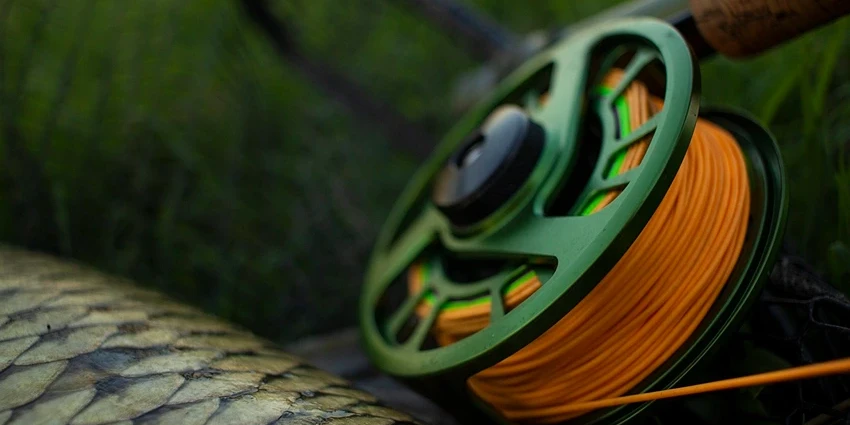All products were chosen independently by our editorial team. This review contains affiliate links and we may receive a commission for purchases made. Please read our affiliates FAQ page to find out more.
Fishing for bass, particularly in river environments as detailed in our river bass fishing guide, Fishing for bass can be an exhilarating experience, and exploring various bass fishing destinations can enhance this thrill. The thrill of hooking a feisty bass and the anticipation of reeling it in is something that every angler cherishes. But if you’re looking to take your bass fishing game to the next level, you’ve come to the right place. In this article, we’ll delve deep into advanced bass fishing strategies that will help you become a master angler. Whether you’re a seasoned pro or just starting your bass fishing journey, there’s always something new to learn. So, grab your gear, hop in your boat, and let’s explore the exciting world of advanced bass fishing techniques.
Jump to:
Selecting the Right Equipment
When it comes to advanced bass fishing, your equipment can make or break your fishing trip. Let’s take a closer look at the essential gear you need:
Fishing Rods
Choosing the right fishing rod is essential. Here are some key factors to consider:
- Rod Length: Longer rods provide better casting distance, while shorter ones offer better accuracy.
- Power and Action: Match the rod’s power and action to the type of lures and baits you plan to use.
- Material: Graphite rods are lightweight and sensitive, making them a popular choice for bass fishing.
Reels
Selecting the appropriate reel complements your fishing rod. Consider these aspects:
- Reel Types: Baitcasting reels offer precision, while spinning reels are user-friendly.
- Gear Ratio: Higher gear ratios allow for faster retrieval, ideal for certain techniques.
- Line Capacity: Ensure the reel can accommodate the line weight you intend to use.
Lines
The choice of fishing line can impact your success:
- Monofilament: Versatile and forgiving, monofilament lines are suitable for various techniques.
- Fluorocarbon: Nearly invisible underwater, fluorocarbon lines are excellent for clear waters.
- Braided: Strong and sensitive, braided lines work well for heavy cover fishing.
Location, Location, Location
Finding the right fishing spot is essential for successful bass fishing. Here’s what you need to know:
Bass Hotspots
Identifying bass hotspots can significantly increase your chances of landing a catch:
- Structure: Look for underwater structures like rocks, logs, and submerged vegetation.
- Cover: Bass love cover, such as fallen trees, lily pads, and docks.
- Depth Changes: Transition zones between deep and shallow waters are prime locations.
Seasonal Considerations
Understanding how bass behavior changes with the seasons is crucial:
- Spring: Bass move to shallow waters for spawning.
- Summer: They seek cooler, deeper areas.
- Fall: Bass become more active and feed heavily.
- Winter: They slow down and move to deeper, warmer waters.
Water Temperature
Water temperature influences bass activity:
- Optimal Temperature: Bass are most active in water between 65°F and 75°F.
- Thermoclines: Locate temperature changes to find bass at different depths.
- Temperature Preferences: Different bass species have varying temperature preferences.
Mastering Casting Techniques
Casting is a fundamental skill in bass fishing. Let’s explore advanced casting techniques:
The Perfect Cast
Achieving accuracy and distance in your cast is essential:
- Practice Makes Perfect: Regularly practice your casting skills.
- Accuracy: Focus on hitting specific targets, such as underwater structures.
- Distance: Learn to cast farther while maintaining control.
Flipping, Pitching, and Skipping
These specialized casting techniques can be highly effective:
- Flipping: Accurate short-distance casts with minimal noise.
- Pitching: Longer, controlled casts to specific targets.
- Skipping: Bouncing lures across the water’s surface for a natural presentation.
Fine-Tuning Your Casting Skills
Pay attention to the following details to become a casting expert:
- Wind and Casting: Adjust your casting technique based on wind conditions.
- Lure Selection: Different lures require different casting techniques.
- Line Management: Keep your line tangle-free for smooth casts.
Advanced Retrieval Techniques
Once you’ve made the perfect cast, it’s time to retrieve your lure effectively:
Reeling in Success: Retrieve Styles
The way you retrieve your lure can trigger bass strikes:
- Slow Retrieve: Mimics injured prey and entices bites.
- Fast Retrieve: Provokes aggressive strikes from active bass.
- Stop-and-Go: Pause your retrieve to mimic a wounded baitfish.
The Power of Pause and Twitch
Adding pauses and twitches to your retrieval can make your lure irresistible:
- Pausing: Allow your lure to suspend and entice hesitant bass.
- Twitching: Mimic the erratic movements of injured prey.
Crankbait and Spinnerbait Magic
These lure types have their retrieval techniques:
- Crankbait: Dive and wobble, imitating distressed baitfish.
- Spinnerbait: Create vibrations and flash to attract bass.
Table: Bass Behavior and Lure Recommendations
| Bass Behavior | Recommended Lure |
| Feeding Near Surface | Topwater Lures |
| Suspended or Deep | Jigs, Crankbaits |
| Around Structure | Soft Plastics, Worms |
| Active and Aggressive | Spinnerbaits, Lipless Crankbaits |
| Finicky or Hesitant | Finesse Baits, Drop Shot |
Pro Strategies for Landing Big Bass

Targeting Trophy Bass
For anglers seeking the thrill of catching trophy-sized bass, here are some strategies to consider:
- Big Lures: Use larger lures to attract big bass looking for substantial meals.
- Slow and Stealthy: Present your lure with patience and minimal disturbance.
- Night Fishing: Many trophy bass are more active at night, so consider nocturnal expeditions.
The Role of Live Bait
Using live bait can be highly effective for catching big bass:
- Selecting Bait: Choose live bait such as shiners, crawfish, or large shad.
- Rigging Techniques: Employ techniques like Carolina rigs or live baitfish rigs.
- Natural Presentation: Mimic natural movements of prey to entice cautious bass.
Night Fishing Secrets
Nighttime bass fishing requires unique approaches:
- Low-Light Lures: Opt for dark-colored lures that contrast with moonlight.
- Subtle Retrieval: Slow and subtle retrieval often works best in the dark.
- Fluorescent Lines: Use lines with UV or fluorescent properties for visibility.
Table: Recommended Lures for Trophy Bass
| Lure Type | Best Conditions |
| Large Swimbaits | Big Bass in Open Water |
| Jumbo Worms | Slow, Subtle Presentations |
| Glide Baits | Targeting Giant Bass |
| Nightcrawlers | Effective Night Bait |
| Big Topwater Lures | Aggressive Night Strikes |
Register for our latest in-depth reviews and product round-ups from the experts
Enter your email address below to receive our twice monthly reviews emails.
By entering your details, you are agreeing to our terms and conditions and privacy policy. You can unsubscribe at any time.
Techniques for Bass Fishing Competitions
Preparing for Tournaments
Competing in bass fishing tournaments requires dedication and preparation:
- Research the Venue: Study the tournament location, including water conditions.
- Practice: Familiarize yourself with the fishing area and techniques needed.
- Tournament Etiquette: Learn and adhere to the rules and etiquette of competitive fishing.
Strategies for Competitive Success
To increase your chances of winning tournaments, consider these strategies:
- Cover More Ground: Efficiently move between fishing spots.
- Keep Calm: Stay composed and focused, even under pressure.
- Adapt Quickly: Adjust your tactics based on changing conditions.
Handling Pressure Situations
Bass fishing competitions can be intense. Here’s how to handle the pressure:
- Mental Preparation: Stay mentally strong and confident in your abilities.
- Stay Positive: A positive attitude can make a significant difference.
- Stay Informed: Stay updated on the latest fishing trends and techniques.
Conservation and Ethics

Catch and Release Practices
Preserving bass populations for future generations is essential:
- Proper Handling: Handle fish carefully to minimize stress and injury.
- Barbless Hooks: Consider using barbless hooks for easy release.
- Respect Regulations: Follow local fishing regulations to protect bass.
Responsible Fishing
Practicing ethical and responsible fishing benefits ecosystems:
- Pack Out Trash: Leave no trace; clean up after yourself.
- Respect Wildlife: Avoid disturbing other wildlife while fishing.
- Educate Others: Share responsible fishing practices with fellow anglers.
Frequently Asked Questions (FAQs)
The best time to fish for bass is often during dawn and dusk when bass are most active. However, bass can be caught at any time of day, and their behavior can vary depending on the season and weather conditions.
Select fishing spots near underwater structures, cover, and depth changes. Additionally, consider the season and water temperature, as these factors influence bass location.
Bass are most active in water temperatures ranging from 65°F to 75°F. Understanding how temperature affects their behavior is crucial for successful fishing.
There are no “secret” lures, but choosing the right lure for the conditions and understanding how to present it effectively can make a significant difference in your success.
Handle hooked bass with care. Wet your hands before touching them to protect their slime coat, and use needle-nose pliers to remove hooks gently.
Night fishing requires dark-colored lures, subtle retrieval, and the use of fluorescent lines for visibility. It’s also essential to adjust your presentation to the bass’s nocturnal behavior.
Catch and release is an effective practice for conserving bass populations, especially for larger bass. When done correctly, it allows fish to reproduce and thrive.
Prepare for a tournament by researching the venue, practicing in the area, and adhering to tournament rules and etiquette. Staying composed and adaptable during the competition is also crucial.
Common mistakes to avoid include using the wrong equipment, neglecting proper casting and retrieval techniques, and not considering the impact of weather conditions and seasonal changes.
Bass fishing can be successful in various weather conditions, but understanding how weather affects bass behavior and adapting your strategies accordingly is essential for consistent success.







